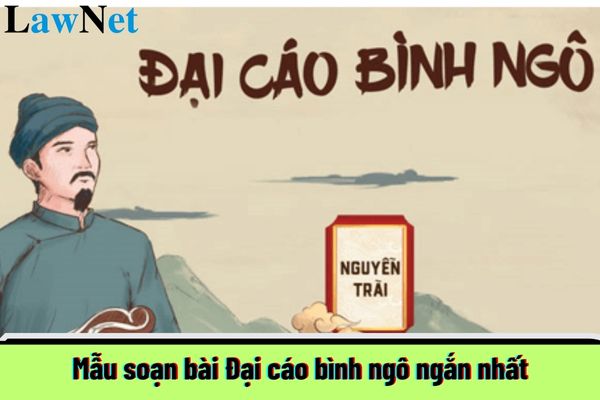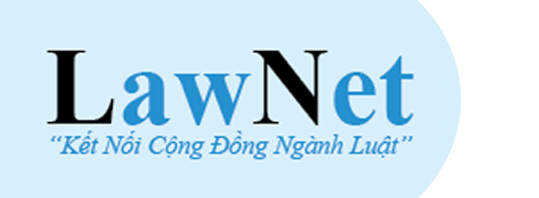What are the guidelines for preparing the shortest lesson "Đại cáo bình ngô"? What are the eligibility requirements for 10th-grade students in Vietnam to achieve the "Good student" title?
What are the guidelines for preparing the shortest lesson "Đại cáo bình ngô"?
Students can refer to the following sample shortest lesson "Đại cáo bình ngô" :
|
Guidelines for preparing the shortest lesson "Đại cáo bình ngô"
I. General Understanding
Context of Composition
"Đại cáo bình ngô" was written by Nguyen Trai in 1428 on behalf of Le Loi to announce the victory over the Ming army, affirming the independence of Dai Viet after a difficult resistance war. The work is a summary of the glorious history of the nation and marks a period of peace and prosperity.
Author Nguyen Trai
Nguyen Trai (1380–1442) was a world-renowned cultural figure, a major political, military figure, and a great poet of Vietnam. He stood out with his deep philosophy of benevolence, patriotism, and compassion for the people, clearly expressed through significant works like "Nation's Verse Collection" and "Đại cáo bình ngô."
Genre and Composition
Genre: Proclamation, an ancient debating literary form, usually used to announce significant events to the nation.
Composition:
State the philosophy of benevolence and affirm national independence.
Denounce the crimes of the Ming invaders.
Recount the arduous resistance and glorious victory.
Declare peace and conclude the war.
II. Content Analysis
Philosophy of Benevolence
Nguyen Trai defines the philosophy of benevolence as "peace for the people" (protecting the peaceful lives of the people) and "eliminating violence" (removal of violence and injustice). This is a noble ideal and guiding principle of the Lam Son uprising. This philosophy is affirmed in the line:
“Benevolence is to bring peace to the people,
The military's foremost task is to eliminate tyranny.”
Benevolence is not only a moral value but also the political and military foundation for building and defending the country.
Affirmation of National Independence
Nguyen Trai asserts that Dai Viet is an independent nation with distinct elements:
A long-standing culture: “Our Dai Viet has had a long-established culture.”
Clear territory: “Mountains and rivers delimit our borders.”
Distinct customs and habits: “Our customs in North and South are different.”
This is the basis to refute the invasion rhetoric of the Ming invaders while emphasizing the national consciousness of independence and self-reliance.
Denunciation of the Ming Invaders' Crimes
The crimes of the Ming invaders are exposed by Nguyen Trai in detail with intense indignation:
“Roasting blackened people on brutal fires,
Burying red children beneath disaster pits.”
The imagery of "roasting," and "burying" paired with powerful, accusatory prose clearly expresses the hatred for the invaders and a profound compassion for the people.
Process of Resistance and Victory
Initial hardships: The Lam Son insurgent army faced shortages of food and meager troop numbers. However, thanks to determination and steadfast will, the insurgent army overcame all challenges.
Glorious victory: Nguyen Trai recounts the catastrophic defeat of the Ming invaders:
“Ma Ky, Phuong Chinh, reckless as hungry tigers,
Ly An, Phuong Chinh, laid down arms in surrender.”
This victory stands as proof of righteous strength and national unity spirit.
Declaration of Peace
Nguyen Trai declares that the nation is free of enemies, ushering in an era of peace and prosperity:
“From now on, the state is stable,
The countryside from this restores anew.”
Majestic prose, affirming national pride and the aspiration for lasting peace.
III. Value of Content and Art
Value of Content
Affirms the independence and sovereignty of Dai Viet, delivering a powerful message of patriotism and national resilience.
Highlights the philosophy of benevolence, viewing the people as the source of the nation's strength.
Value of Art
Coherent structure, sharp arguments, persuasive reasoning.
Vivid, emotional language, harmoniously blending argumentative and lyrical elements.
IV. Answering Practice Questions
How is the philosophy of benevolence reflected in the proclamation?
The philosophy of benevolence is defined as "peace for the people" and "eliminate violence." This is a great philosophy, taking the people as the root, protecting their peace and eliminating harmful tyrannical forces.
What is the significance of the statement "Our Dai Viet has had a long-established culture"?
The statement affirms that Dai Viet is a nation with a long-standing culture and history, clear territory, and distinct customs, not dependent on any other nation, especially the North.
Why is the "Đại cáo bình ngô" considered Vietnam's second declaration of independence?
The work is considered the second declaration of independence because it affirms the independence and sovereignty of Dai Viet, completely refuting the invasion rhetoric of the Ming invaders, and issues a powerful proclamation of the nation's victory and peace.
|
*Note: The information is for reference only./.

What are the guidelines for preparing the shortest lesson "Đại cáo bình ngô"? What are the eligibility requirements for 10th-grade students in Vietnam to achieve the "Good student" title? (Image from the Internet)
What are the eligibility requirements for 10th-grade students in Vietnam to achieve the "Good student" title?
Under Article 15 Circular 22/2021/TT-BGDDT, the regulations are as follows:
Commendations
1. Principals shall award certificates of achievement for students
a) End-of-year commendation
- Award the title “Học sinh Xuất sắc” (Excellent student) for students who have obtained Excellent training and learning results for the entire school year and achieved DTBmcn of at least 9.0 in subjects that are assessed via both feedback and scores.
- Award the title “Học sinh Giỏi” (Good student) for students who have obtained Excellent training and learning results for the entire school year.
b) Commend students for having unexpected merits in training and learning in the school year.
2. Students with special achievements shall be considered and requested for commendation by schools.
Thus, to achieve the "Good student" title, 10th-grade students must obtain Excellent training and learning results for the entire school year. Learning results are assessed at Excellent if:
- All subjects assessed with feedback are placed in Qualified category.
- All subjects assessed by both feedback and scores have minimum scores of 6.5 for DTBmhk and DTBmcn with 6 subjects among which have minimum scores of 8.0 for DTBmhk and DTBmcn.
What are the learning rights and obligations of 10th-grade students in Vietnam?
Under Article 13 of Education Law 2019, the learning rights and obligations of 10th-grade students in Vietnam are as follows:
- Learning is the right and obligation of every citizen. Every citizen, regardless of ethnic origin, religion, belief, gender, personal characteristics, family background, social status or economic conditions, has equal rights of access to learning opportunities.
- The State shall ensure social equality in education, create a safe educational environment, ensure inclusive education and enable learners to develop their potentials and talents.
- The State shall give priority in enabling children with special backgrounds as prescribed in the Children Law, disabled and handicapped persons as prescribed in the Law on Persons with Disabilities and learners from poor and near-poor households to exercise their learning rights and obligations.


